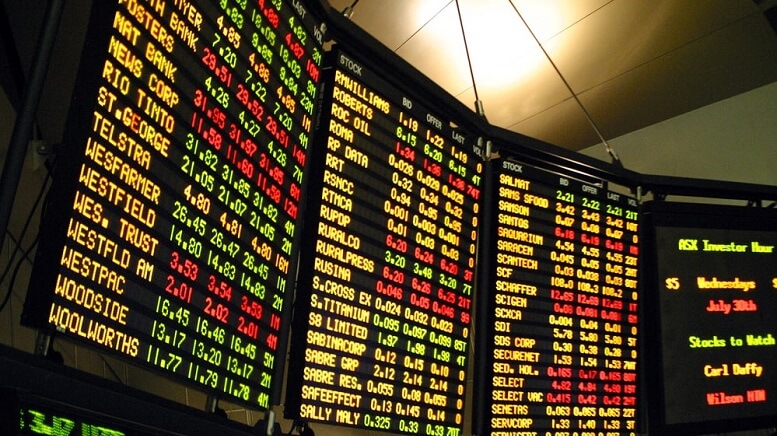The Wall Street market pullback deepened Tuesday as major U.S. indexes fell again, led by sharp declines in mega-cap tech and chipmakers. Concerns that market valuations had climbed too quickly—especially among artificial intelligence leaders—triggered another wave of selling. By early trading, the S&P 500 slipped 0.3%, the Dow Jones Industrial Average dropped 361 points, and the Nasdaq Composite fell 0.6%, extending weeks of volatility.
Nvidia (NASDAQ:NVDA), once the undisputed engine of the AI boom, continued to slide. Shares fell another 1.1% ahead of its highly anticipated earnings report, adding to the 8.6% decline already logged this month. As one of the market’s most influential stocks, Nvidia’s weakness added pressure to the broader Wall Street market pullback.
Tech Titans Drag Markets Lower
Tuesday’s declines stretched beyond Nvidia. Other semiconductor companies—including Micron Technology (NASDAQ:MU), Intel (NASDAQ:INTC), and Qualcomm (NASDAQ:QCOM)—shed between 1% and 2%, reflecting renewed skepticism about lofty chip-sector valuations.
Major tech giants also stumbled. Microsoft (NASDAQ:MSFT) fell 1.5%, while Amazon (NASDAQ:AMZN) lost 1.8%. The sell-off accelerated after an outage at Cloudflare (NYSE:NET) disrupted ChatGPT and other major online platforms, adding another layer of uncertainty to the already fragile tech landscape.
These cascading losses underscored how heavily weighted U.S. markets remain toward high-growth technology names—and how sensitive investors are to signs that momentum may be fading.
Retail Weakness Adds Pressure
Retail stocks contributed to the Wall Street market pullback as Home Depot (NYSE:HD) plunged 3.1%. The home improvement chain reported weaker-than-expected summer profits, citing fewer severe storms, slowing consumer spending, and persistent housing-market softness. Although Home Depot trimmed its fiscal 2025 earnings outlook, it did raise its sales growth forecast—an optimistic note overshadowed by broader economic caution.
More retail earnings loom, with Target (NYSE:TGT) and Lowe’s (NYSE:LOW) reporting Wednesday, followed by Walmart (NYSE:WMT) and Gap (NYSE:GPS) on Thursday. With consumer sentiment wavering and inflation still elevated, retail results could play a significant role in shaping investor sentiment this week.
Global Markets Join the Retreat
The Wall Street market pullback mirrored a global sell-off as European and Asian indexes sank sharply. Germany’s DAX, France’s CAC 40, and the U.K.’s FTSE 100 each dropped 1.4% by midday.
Asian markets were hit even harder. Japan’s Nikkei 225 plunged 3.2% as yields on 30-year Japanese government bonds surged to 3.31%, raising fears about rising spending plans under Prime Minister Sanae Takaichi. Tech stocks led the downturn, with Tokyo Electron sliding 5.5% and Advantest falling 3.7%.
South Korea’s Kospi tumbled 3.3%, dragged down by a 2.8% drop in Samsung Electronics and a sharp 5.9% decline in SK Hynix. Taiwan’s Taiex lost 2.5% as TSMC fell 2.8%. Chinese markets also struggled, with Hong Kong’s Hang Seng dropping 1.7% and the Shanghai Composite down 0.8%.
Australia’s S&P/ASX 200 declined 1.9%, completing a picture of worsening global risk sentiment.
Macro Worries Weigh on Traders
Investor anxiety is rising ahead of Thursday’s delayed U.S. employment report. The prolonged government shutdown disrupted economic data releases, leaving investors and Federal Reserve officials with fewer signals about the health of the job market.
Complicating the outlook further, inflation remains above the Fed’s 2% target, muddying the path for interest rate cuts. With markets already stretched and recession risks simmering in the background, the Wall Street market pullback reflects growing uncertainty about the central bank’s next moves.
A stronger-than-expected jobs report could delay rate cuts again, while a weak report could raise fears of a sharper economic slowdown.
Energy Prices Hold Firm
Despite the turbulence, U.S. benchmark crude oil remained steady, hovering just under $60 per barrel. But even stable energy prices offered little support in a market dominated by tech weakness and global macro stress.
Featured Image – Depositphotos







